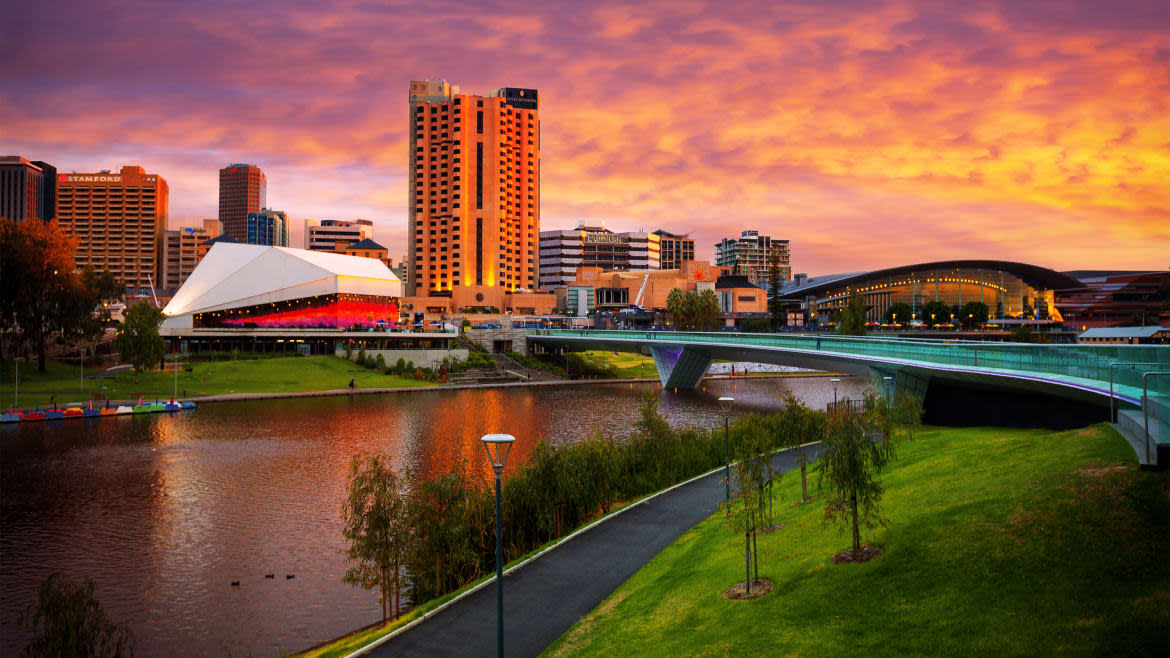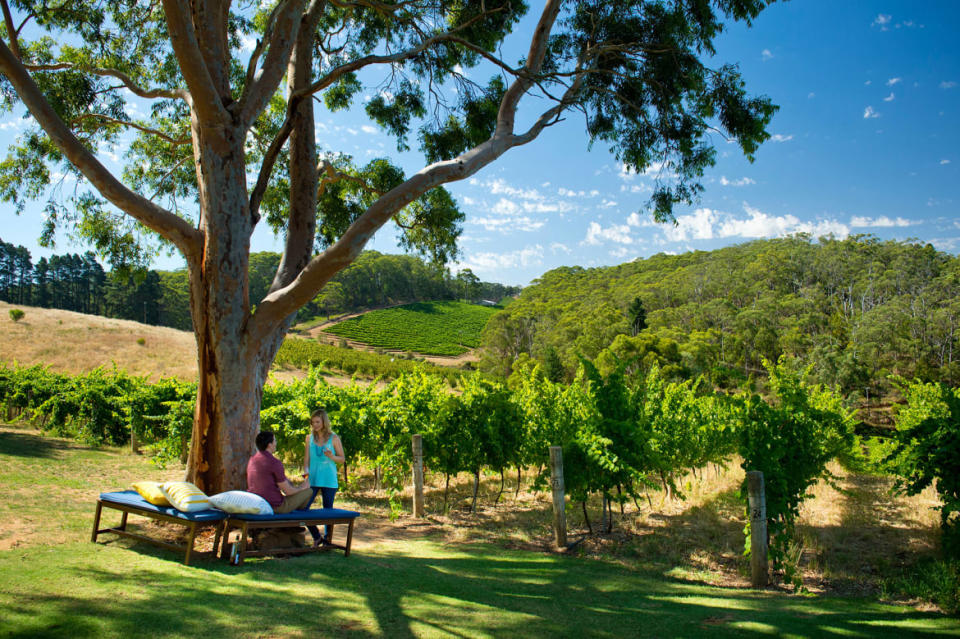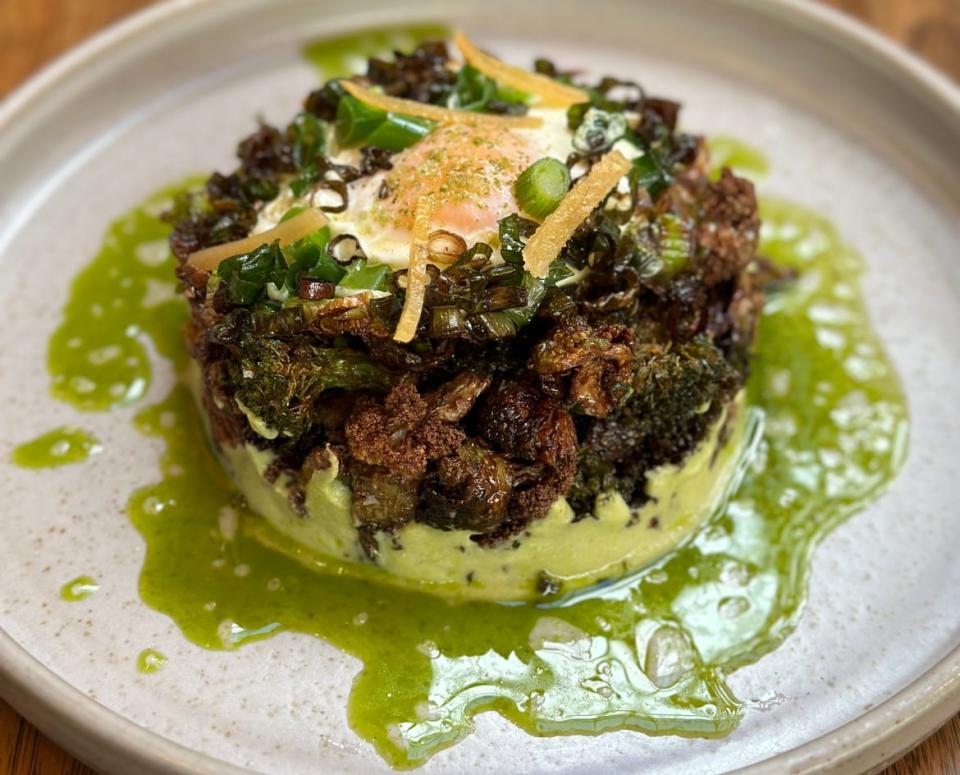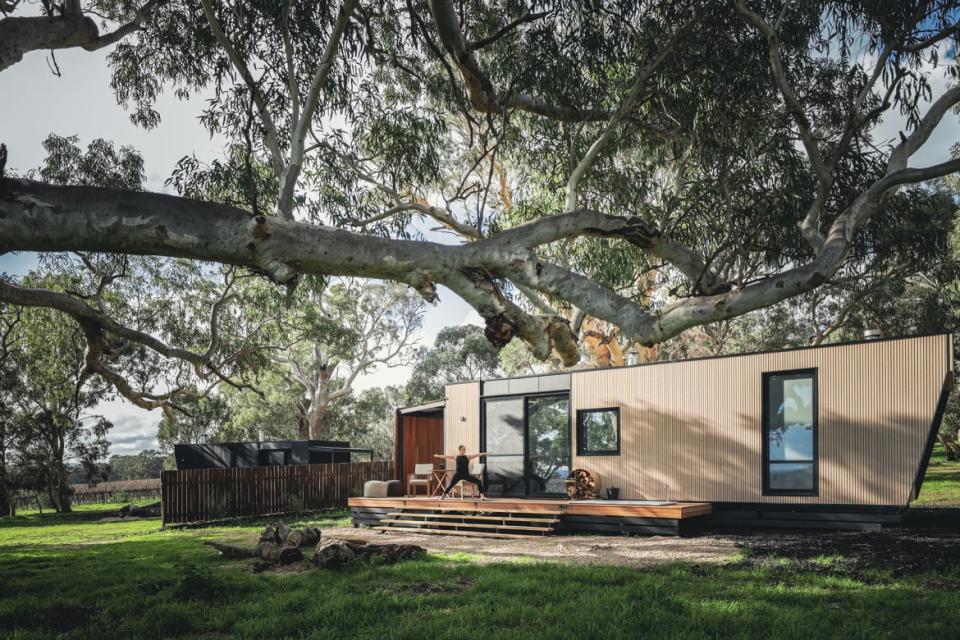Falling (Almost Literally) for the Wonders of South Australia

With an ungainly swerve, the bike slipped out sideways from beneath me. I may have been going at an unathletic snail’s pace as I approached the curve, but I still ended up frantically righting my mountain bike while furiously looking around. “Please, nobody see me right now,” I pleaded. Attempting hairpin curves on a downwards mountain biking trail as a novice might be one of the more humbling things I’ve done of late.
But it was on a trip full of humbling experiences. After all, few things knock you down a peg or two as a traveler than going somewhere you’d never given much consideration only to realize how foolish you’d been. And here I was, with only a few days to get a taste of all greater Adelaide has to offer and realizing how much I, and so many others, are missing down here.
I should admit up front that when I boarded my plane for Canberra, I was lamenting how much I didn’t get to see as much I was basking in what I had experienced. I didn’t make it to Kangaroo Island, or to Flinders Ranges. I spent only a night in the Fleurieu Peninsula and only drove along the magnificent beaches. Some of the more unique winemakers working in Australia’s wine capital only came across my radar as I was about to leave. What’s remarkable is that I actually had a jam-packed few days.
The city of Adelaide is beautifully sited. It’s one square mile of city ringed by parkland and then leafy suburbs that give way to either the sea or the hills. A mere 26,000 people live in the actual city, whereas the overall metropolitan population is roughly 1.4 million. That central city is far from a ghost town, though. It’s full of hotels, bars, restaurants, and home to the famed Adelaide Central Market.

"Mt Lofty Ranges Vineyard."
Since eating and drinking are what brings most people to Southern Australia, the market is a great place to start your visit. It’s also just across the street from the Hotel Indigo, which is a great option for visitors who want to be in the thick of the urban experience.
I was shown around the market by Food Tours Australia, which is run by restaurateur Mark Gleeson. Gleeson owns the SiSea Cafe inside the market’s hallowed halls, and one is well advised to make time to pop by for some local oysters and a glass of bubbly. Walking around its stalls, it’s easy to see why Gleeson boasts, “This is the most important food center in Australia… chefs are born here, it’s where the consumer meets the produce.” It’s not the most stunning historic structure, nor is it all gussied up like new food halls trotted out by every city in the last decade, but the market has just about everything one could want from immigrants from all over the world and, most importantly, it all looks delicious.
You can also hit such a wide range of dining options. At Restaurant Botanic, those in pursuit of an elaborate tasting menu experience will be sated. In recent years, this romantic cottage in the middle of the city’s gardens has won a cornucopia of awards across Australia, even being named the continent’s best restaurant overall. It’s helmed by American chef Justin James, who worked his way through kitchens at Noma, Eleven Madison Park, and Blue Hill at Stone Barns. At Botanic, the plating is beautiful and, sure, a few folly-style dishes–like drinking crocodile broth through twigs–but it’s more playful. It delights in the freedom provided by incorporating Aboriginal Australian ingredients to break us from the tastes we’re so accustomed to.
You might get to eat cured emu over Himalayan rock salt, or abalone dressed in lemon myrtle (take a deep sniff), bread with clam butter and jam (yes, I know), mussels in camel’s milk, and Tasmanian scallops finished in a spicy ginger broth, a dessert made of kangaroo tendons, and crème brûlée in a quandong.
If cozy neighborhood spots are more your pace, it doesn’t get more neighborly or cozy than at Parwana Afghan Kitchen, the beloved Mile End restaurant. It’s run by the Ayubi family, who fled the Afghan war in the 1980s. Zelmai, the father, floats around the dining room, fretting over those dining alone, ready with a scintillating tale from his life in a world that is long gone. Definitely get the fritters with the slightly spicy chutney, and the mantu (steamed dumplings) are every bit the savory delights you’d expect from a place this popular.

The brassica & skordalia at Topiary Cafe.
And for those who want something that doesn’t fit neatly in a box, in the hills to the northeast of Adelaide is Topiary Cafe. Set within a nursery and forest wherein chef Kane Pollard forages, it has a menu that is hyper-seasonal and creative. My brassica & skordalia may have been picture-perfect, but I had to force myself to not devour it like a teenager mid-growth spurt, it was so delicious. Luckily, it was followed by a divine charred strawberry french toast.
Wine would be the answer if the question were what the one thing South Australia is most famous for. In my couple of days I got to sample two of its regions–Adelaide Hills and McLaren Vale. Whatever your image of Australia is, it’s likely not the Shire-like groves and hillocks around which roads curve in the Adelaide Hills. With the leaves turning it was a Hans Heysen landscape come to life. One of the prettier spots with award-winning wines and food is Mount Lofty Ranges Vineyard. Despite its smaller size, it has an astonishing array of varietals grown here: Shiraz, Riesling, Gewurztraminer, Pinot Noir, Chardonnay, Sauvignon Blanc, etc.
Mount Lofty is to the east of Adelaide. To the south, on the Fleurieu Peninsula, is the McLaren Vale. The Vale is home to big vintners like d’Arenberg, with its famed giant cube, which many will find fun. But I’d recommend potential visitors work with tour operator Coast & Co. to craft a journey that takes you to some of the smaller vintners. (Just having a conversation with them will convince you of the worth of tour operators and planners and why I’m skeptical AI will replace them any time soon.) Two spots worth eating in the region are Down the Rabbit Hole, which looks like an influencer Tik Tok come to life or a Cotton On commercial, but the food is downright delectable, and the Salopian Inn, which serves classic hearty fare and is where the winemakers themselves like to gather. I spent the night at one of the newest eco-luxury cabins from CABN, where I not only got to sleep essentially among the vines, but the cabin came equipped with its own sauna, a great way to sweat out some of the booze.

CABN X - Giles
Luckily, given the amount I was eating and drinking, I also had an afternoon of mountain biking down from the Mt. Lofty Summit with Escapegoat Adventures. The trail commences with those aforementioned hair-raising turns before morphing into an easier but still exhilarating fast ride through gum tree forests and then some of the city’s ritzier suburbs. You’re practically guaranteed to see kangaroos and koalas in their natural habitat, and the whole trail smells fantastic. The only downside, if you can even call it that, is you’ll quickly discover that cockatoos may look cool but they’re incredibly annoying.
Seeing a koala napping in a tree definitely had “Only in Australia” written all over it, but two of my favorite experiences while in town really gave me a sense of place like few others. The first was a walk through the Botanic Gardens with Bookabee Australia, an Aboriginal owned and operated tour company. I took their tour focused on Australian bush food and plant uses. Iteka, my charming guide, extolled the wonders of the witchetty grub (eaten raw or cooked) or the many uses of the bunya pine. I learned not to park or camp under gum trees because they get stressed and drop limbs and that the Botero-esque bottle tree can be tapped for fresh water. There were sticky seeds used to trap birds and grass that smells like passion fruit that makes a great tea when dried out. Little imagination is required for a bush with flowers that look like brushes–they can in fact be used for brushes.
Expectations were also very much met when I spent one of my nights watching an Australia rules football match at the Adelaide Oval. The Oval is in the heart of the city, walking distance from pubs and restaurants and the ultra-luxe new hotel Eos Skycity where I also spent a night. Don’t ask me about the rules–every time I thought I understood it, a new exception came up. The crowd was rowdy and boisterous, something I realized I missed from my childhood rooting for Boston sports teams. This time it was because it was actually a State of Origin match between players from two different states–New South Wales and Queensland, not South Australia–meaning the fans had traveled far to watch their states compete. Somehow, watching a sport I know nothing about and that back home most wouldn’t either, surrounded by people going nuts, made me feel far from home in a way all travelers love. It may not have been a highbrow cultural experience, but it was a truly Australian one.
One well worth the indignity of falling off a bike.
Get the Daily Beast's biggest scoops and scandals delivered right to your inbox. Sign up now.
Stay informed and gain unlimited access to the Daily Beast's unmatched reporting. Subscribe now.


